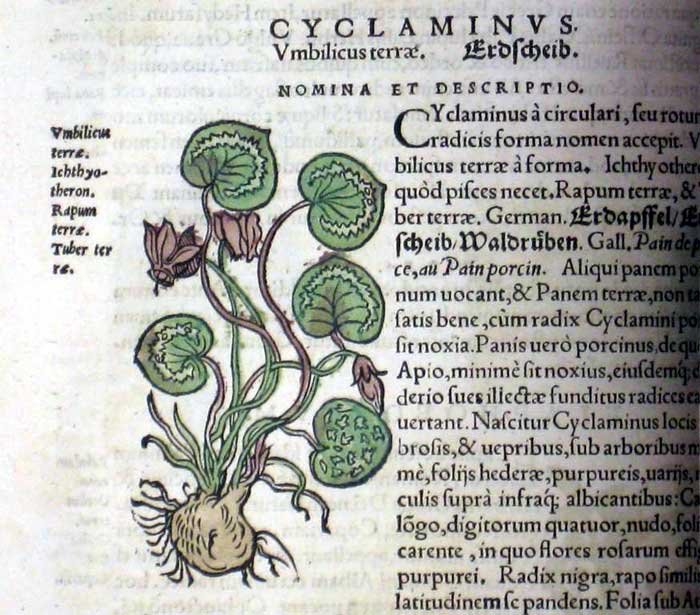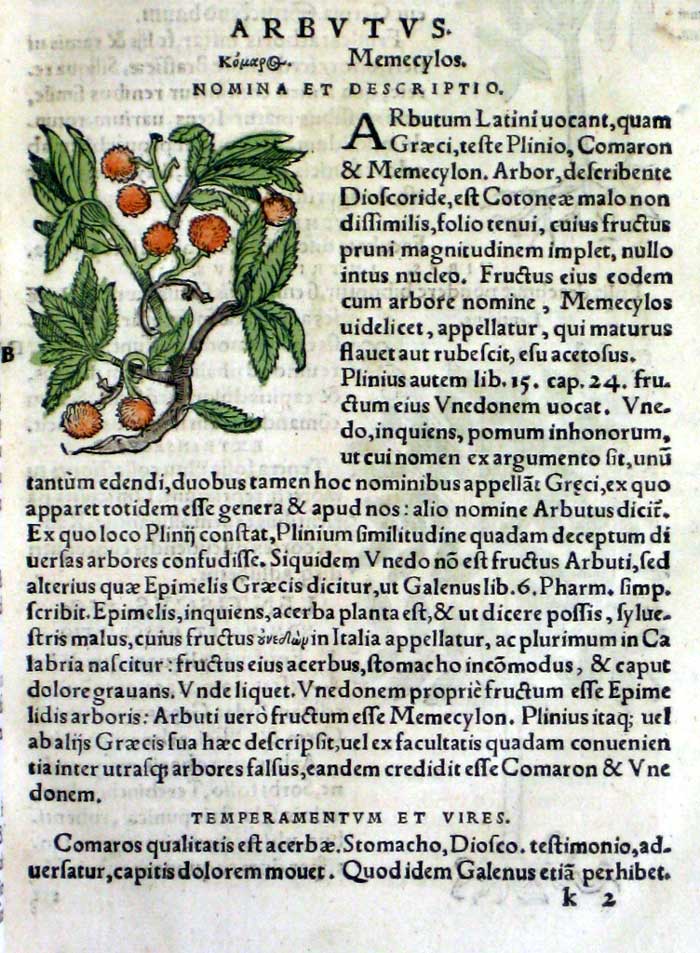In this People and Plants blog post we’re taking a look at the German botanist Adam Lonicer.

Adam Lonicer, also known as Lonitzer, Lonicerum, Lonicerus, or Loniceri, was born on October 10, 1528 in Marburg, Germany. He studied in Marburg and Mainz before becoming professor of mathematics at the Lutheran University of Marburg. In 1554 he received his medical degree and he later pursued a medical career as the city physician of Frankfurt. His true interest though was herbs and the study of botany. In 1554 he married Magdalena Egenolph and worked as a proofreader for his father-in-law, a German printer who specialized in producing herbals.

Lonicer soon decided to produce an herbal of his own, the Kreuterbuch, published in 1546. As the original full title makes clear, Naturalis historiae opus novum : in quo tractatur de natura et viribus arborum, fruticum, herbarum, Animantiumque terrestrium, uolatilium & aquatilium … (Frankfurt, 1551), the herbal did not solely focus on plants but also included some descriptions of animals, birds, fish and metals. The emphasis throughout the book is on how one uses animal, vegetable, and mineral substances in the production of medicinal, gastronomical, and household preparations.

Although much of the work was not original to Lonicer it proved to be the greatest printing success of the Egenolph firm. It was one of the most enduring publications of its kind and was still being produced in Germany in 1783. The text covers much of the known natural world at the time and had a wide audience that included physicians, apothecaries, and both rural and urban householders. Lonicer provides us with one of the early descriptions of local flora and he is one of the first to distinguish deciduous trees from conifers. That seems obvious to us but at the time it was unconventional.

The most striking features of this book are its hundreds of hand-colored woodcuts. As you can imagine coloring in each image is an intensive task and would have greatly increased the cost of the book. Colored herbals were relatively rare since they were very costly to produce therefore many early printed herbals were unpainted. There’s the story of the coloring of a Flemish edition of L’Obel’s herbal for the Duke of Prussia, it took three months to color. By the time it was finished it was too expensive for hard-working botanists to buy.
Lonicer took over the publishing firm after his father-in-law died in 1555. He went on to publish no fewer than four editions of his Kräuterbuch between 1557 and 1577. This Renaissance botanist died at Frankfurt-am-Main on May 29, 1586.

So, what plant genus is Lonicer’s name associated with?
A few hints:
It’s in the Caprifoliaceae family and native to North America and Eurasia.
There are about 180 species identified in North America and Eurasia.
It’s a widely cultivated ornamental garden plant.

If you guessed Lonicera, you’re correct!
Members of the genus are commonly known as honeysuckle, named for their sweet nectar. Lonicera are prized for their fragrant flowers with some bearing edible fruit. Many creatures, both day and night feeding, use them as a nectar source. While honeysuckle is a favorite landscaping plant many species can be invasive or grow so heavy they overpower their supports or trellis. Choose varieties wisely and monitor their growth.

Wonderful piece, thank you! I don’t know if this was a deliberate aesthetic decision, but the curves in the photos all seem to relate to each other and were quite pleasing. 🙂
Thank you for an interesting article. It’s nice to know the reasons a plant has its name and to discover more about the plantsmen/women of the past. Knowing about the past, helps us understand the future.
Wonderful piece! I too love learning more about the origins of plant names.
Honeysuckle is one of my favorite. Thank you.
This is absolutely fantastic. We’ve tried for years to educate our clients on the fact that plants and trees are as complex as us and have rich history and culture, and you displayed that here excellently in this post. Keep up the great work!